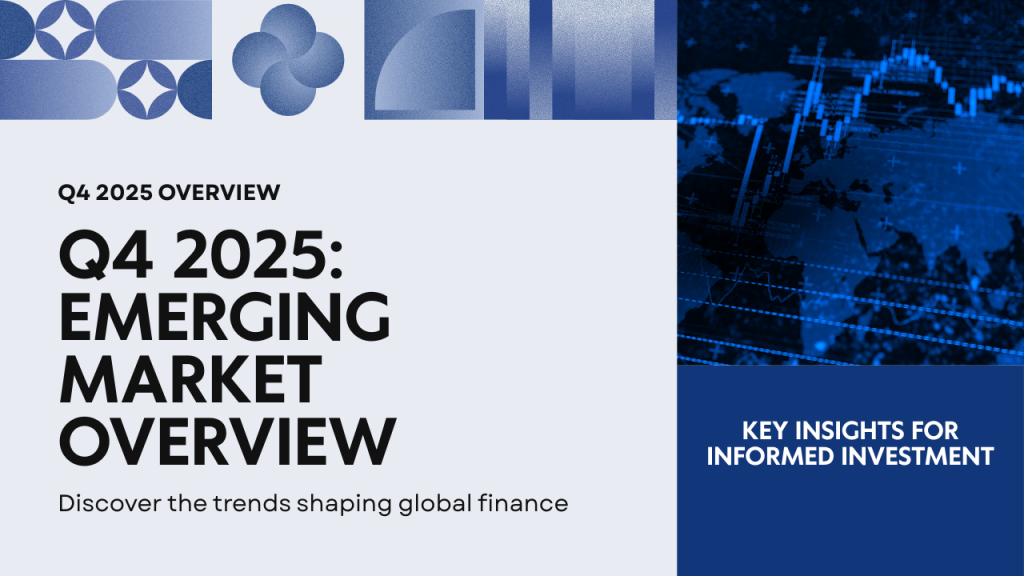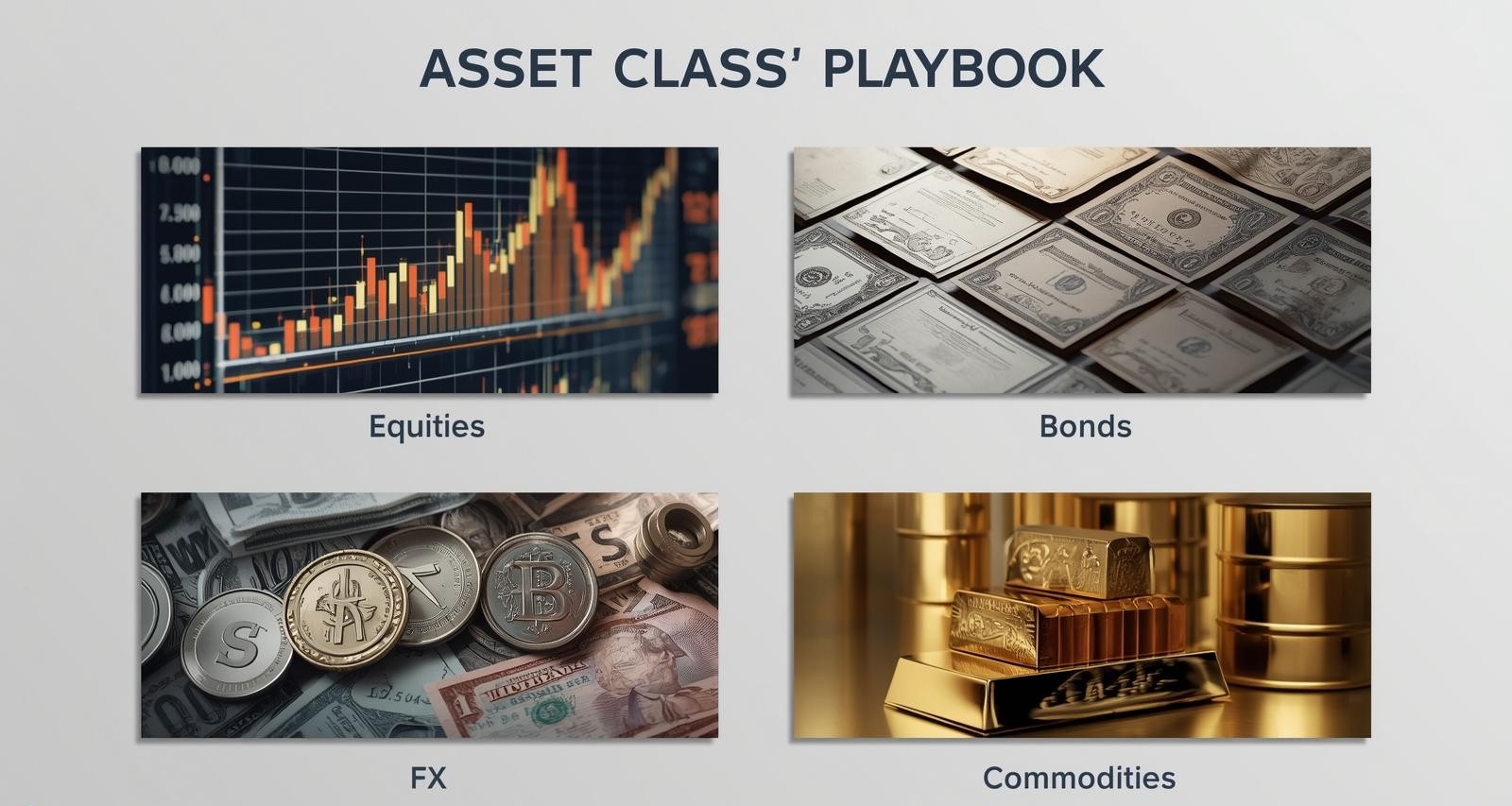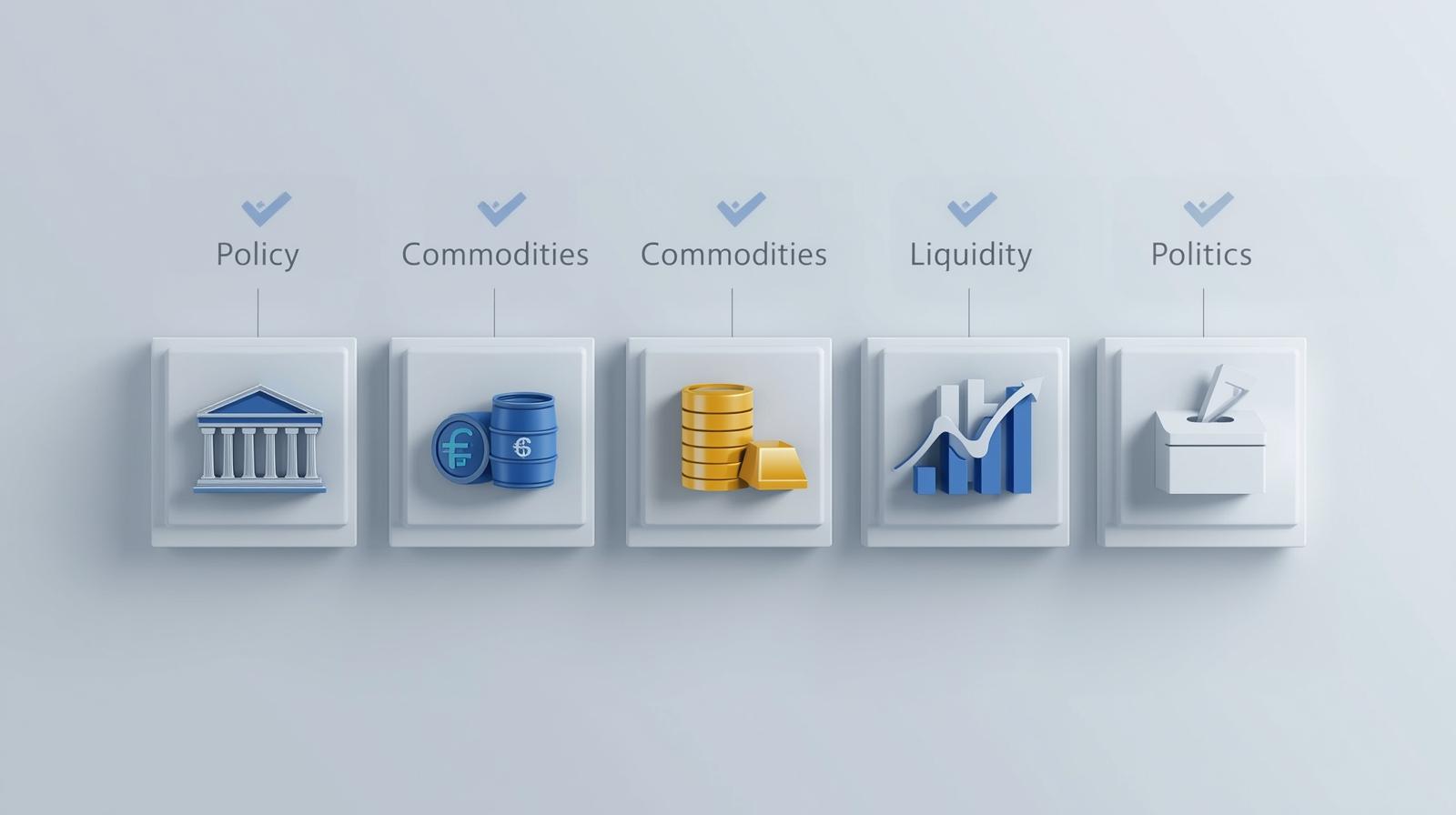
Executive Summary
Emerging markets (EMs) enter Q4 2025 in a position of cautious resilience. Global macro conditions are shifting from an aggressive tightening phase toward stabilization. Inflationary pressures are easing in major developed markets, policy rates appear to have peaked, and the U.S. dollar shows early signs of moderation. These factors collectively provide breathing space for EM assets, though risks tied to geopolitics, commodity supply, and structural reforms continue to loom large. This expanded report provides a 360-degree analysis of EMs in Q4 2025, including macro dynamics, regional highlights, asset class outlooks, investor strategies, and a forward-looking link to 2026 opportunities.

1. Global Macro Backdrop
1.1 Monetary Policy Turning Point
The most important driver for EMs in Q4 2025 is the transition of global monetary policy from hiking cycles toward stabilization. The U.S. Federal Reserve has signaled a pause, with markets pricing in the first potential cuts in 2026. For EMs, this reduces pressure on local central banks to maintain ultra-high rates, opening space for selective easing. Countries such as Brazil and Chile, early movers in the hiking cycle, now have room to cut more aggressively, while India and Mexico adopt a more cautious stance due to persistent core inflation.
1.2 Inflation Dynamics
Global inflation has moderated, yet core services inflation in developed markets remains sticky. In EMs, food inflation risks are declining as supply chains stabilize, though climate shocks still pose headline risks. Energy prices remain volatile; any renewed spike could reverse the disinflation trend. Investors should monitor CPI releases in Mexico, India, and Indonesia as leading indicators of bond and FX performance.
1.3 U.S. Dollar and Capital Flows
The dollar has softened modestly as rate differentials narrow. A range-bound to weaker USD typically boosts EM flows. However, any resurgence in U.S. growth or inflation could revive dollar strength. For investors, this underlines the importance of diversifying EM FX exposure and balancing carry trades with tactical hedges.
1.4 Geopolitical Landscape
Geopolitical risk remains a constant overlay for EM investing. In 2025, U.S.–China competition intensifies around technology and supply chains, Russia’s war in Ukraine continues to disrupt energy markets, and Middle East tensions keep oil prices sensitive. These dynamics influence not only commodity exporters but also the broader sentiment around EM risk premiums.
1.5 Climate and ESG Considerations
Extreme weather events, from droughts in Latin America to typhoons in Asia, remind investors of climate-linked vulnerabilities. ESG integration is no longer optional; capital increasingly seeks EM assets aligned with green transition pathways. Sovereigns issuing green bonds and corporates tied to renewable energy projects attract differentiated demand, creating a bifurcation between ESG-aligned and non-aligned issuers.
2. Regional Outlooks
2.1 Asia
Asia remains the engine of EM growth, led by India, Indonesia, and Vietnam. Each country presents distinct drivers: India’s domestic demand boom, Indonesia’s commodity-driven investment, and Vietnam’s export-oriented growth. China, while still central, faces structural challenges of weak consumption and high debt, requiring investors to be more selective in allocating capital.
India
India sustains its position as the fastest-growing major economy. A blend of domestic demand, infrastructure investment, and tech-driven reforms create a supportive environment for equities and bonds. Financials, IT services, and consumer sectors remain structural winners. The inclusion of Indian government bonds in global indices further bolsters foreign inflows into fixed income.
Indonesia
Indonesia’s role in the EV supply chain is expanding rapidly. As the world’s largest nickel producer, Indonesia attracts record FDI into downstream processing and battery manufacturing. This structural trend complements resilient domestic banks and digital economy platforms. Policy credibility underpins investor confidence, though reliance on commodity cycles introduces volatility.
Vietnam
Vietnam thrives as a manufacturing hub, benefiting from supply-chain diversification away from China. Electronics, apparel, and furniture exports remain strong, though global demand fluctuations can hit short-term growth. Its youthful demographics and rising middle class support domestic consumption, providing balance against export cyclicality.
China
China enters Q4 2025 with a complex mix of stimulus measures and structural headwinds. Policy easing continues in real estate and credit markets, but investor confidence is fragile due to high debt levels and weak consumer sentiment. Equity opportunities are concentrated in new energy, semiconductors, and select consumer internet platforms, while property remains high risk.
2.2 Latin America
Latin America reflects a barbell of opportunities: Mexico, strongly anchored by nearshoring and prudent fiscal policy, versus Brazil, where cyclical value persists but structural reforms are incomplete.
Mexico
Mexico is the prime beneficiary of U.S. nearshoring trends. Industrial parks, logistics, and infrastructure benefit from rising FDI, while banks gain from increased business activity. The peso’s high real yield enhances investor returns, though political shifts remain a medium-term risk.
Brazil
Brazil trades at attractive valuations. Equities in exchanges, consumer discretionary, and commodity-linked sectors present cyclical upside. On the bond side, high nominal and real yields offer carry, though fiscal slippage is a key risk. Policy progress on reforms could trigger reratings.
2.3 EMEA
GCC (Gulf Cooperation Council)
GCC countries enjoy fiscal surpluses from oil revenues and attract growing FDI into renewable projects. Sovereign credit remains strong, and equities benefit from both energy and diversification efforts. Green bond issuance is expanding, aligning with global ESG demand.
South Africa
South Africa remains a tactical allocation due to structural challenges in electricity supply, governance, and labor markets. Commodity exports provide cyclical relief, but policy uncertainty weighs on long-term positioning.
Türkiye
Türkiye continues to face macro volatility. High inflation, unorthodox policy decisions, and FX instability keep investors cautious. However, tactical opportunities exist in select corporates and hard-currency bonds during periods of stabilization.
3. Asset Class Playbook

Equities
Equities remain the favored risk asset in EMs. Investors should focus on quality large caps in India and Mexico, high-growth digital platforms in Southeast Asia, and cyclical plays in Brazil. ESG leaders across sectors attract differentiated inflows, particularly in renewables and financial inclusion themes.
Sovereign Bonds
Sovereign spreads have narrowed, but relative value persists in countries with credible fiscal paths. Mexico, Indonesia, and GCC sovereigns remain core allocations. Watch out for fiscal slippage in Brazil and frontier issuers.
Corporate Bonds
Corporates in banking, energy, and infrastructure sectors dominate issuance. Select high-grade corporates in Mexico and India provide stability, while Indonesian resource-linked names offer yield with commodity exposure.
FX Opportunities

Carry trades in MXN, INR, and IDR remain attractive. Tactical positions in BRL and ZAR can add alpha, though with high volatility. Hedging strategies are essential to manage sudden USD rebounds.
Commodities
Exporters such as Indonesia and Brazil enjoy strong commodity cycles, while importers face risks. Investors should balance cyclical oil exposure with structural plays in transition metals such as copper, nickel, and lithium.
ESG Instruments
Green, social, and sustainability-linked bonds provide diversification and attract specialized capital. ESG adoption differentiates winners from laggards in sovereign and corporate issuance.
4. Key Themes in Q4 2025
- Nearshoring & Supply Chain Realignment (Mexico, Vietnam, India)
- Digital Economy Growth (India fintech, Brazil e-commerce, SEA platforms)
- Energy Transition Metals (Indonesia nickel, Chile copper, Brazil renewables)
- Domestic Demand & Middle Class Expansion (India, Indonesia, Vietnam)
- Frontier Market Yield Opportunities (Kenya, Nigeria, Pakistan)
5. Risk Factors

- Policy surprises (Fed, China, EM central banks)
- FX shocks from USD rebound
- Commodity price spikes from geopolitical shocks
- Liquidity stress at year-end
- Political uncertainty from elections and transitions
6. Investor Positioning Strategies
- Equities: Core quality (India, Mexico) + satellites (Indonesia, Vietnam) + tacticals (Brazil)
- Bonds: Sovereigns (Mexico, Indonesia, GCC), corporates (banks, energy), ESG green bonds
- FX: Carry basket (MXN, INR, IDR) + tactical BRL/ZAR with hedges
- Commodities: Balance oil with structural exposure to copper, nickel, lithium
7. Quarterly Checklist
- Earnings revisions in India, Mexico, and Indonesia
- Inflation momentum in LatAm and Asia
- Capital flows into EM ETFs
- Commodity price cycles and inventory data
- Policy calendars: Fed, EM central banks, OPEC
8. Forward Link to 2026 Outlook
Q4 2025 lays the groundwork for 2026. With rates peaking, disinflation in progress, and ESG adoption accelerating, EMs stand at the cusp of a stronger structural allocation phase. Explore our 2026 thematic research for deeper insights into how digitalization, energy transition, and middle-class expansion will shape the decade.
Next: 2026 Outlook & Recommended Reads
- Emerging Markets 2026 Outlook — full-year drivers and long-term opportunities
- EM Equities 2026 — tech, EV/batteries, and consumer growth themes
- EM Risks 2026 — political, macro, and structural risk map
Conclusion
Q4 2025 represents a transition quarter for EMs. With global rates peaking, inflation moderating, and the USD softening, conditions are more favorable than in prior years. Still, investors must navigate geopolitical risks, commodity volatility, and political cycles. A disciplined barbell strategy across equities, bonds, FX, and commodities can capture opportunity while mitigating downside risks. The foundation set in Q4 2025 positions investors for a more structural allocation into 2026, where themes of digitalization, energy transition, and middle-class expansion will dominate.
Leave a Reply